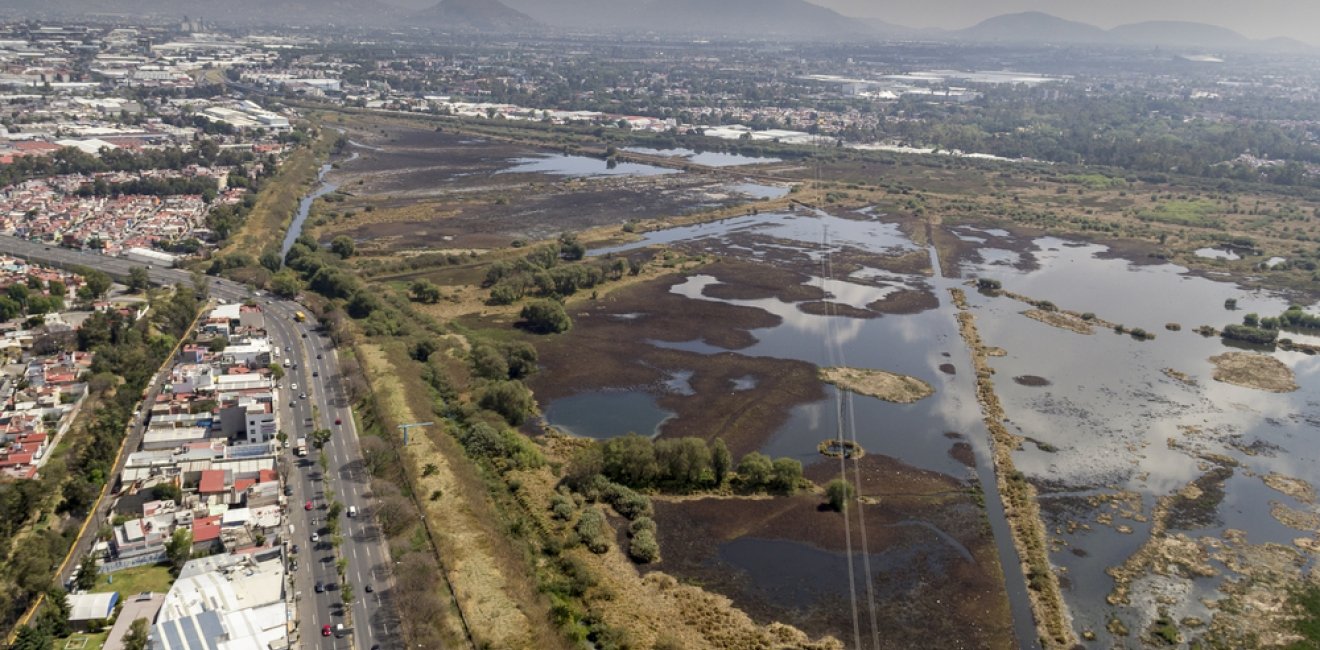2024 is an important year for both the United States and Mexico. Not only is it an election year, but it also marks one year until the end of the 2020-2025 water-sharing cycle. In the specific case of US-Mexico water sharing, the conclusion of the 2025 water cycle will highlight either the continued durability of the 1944 water sharing treaty or its antiquity – and under new presidential leadership. Water is an environmental, economic, and political factor. It emphasizes partisan divides and discord between the federal government (the Democratic party in the US, Morena in Mexico) and local governments (the Republican party in Texas, the PAN in Chihuahua). It is a bargaining chip, a negotiating tool, and at times, a leveraging factor. It is set to be an even more prominent figure in politics as the effects of climate change worsen and demand for water grows.
Balancing the needs of citizens, industry, and international commitments, such as the 1944 Treaty, is a recurring challenge, but the change in administration may offer hope for better water management and allocation policies, particularly on the Mexican side of the border.
In the previous water-sharing cycle, which concluded just days before the 2020 US presidential election, Mexico and the United States reached an agreement, with Mexico transferring all the water in the Amistad and Falcon reservoirs to the US. The agreement, known as Minute 325, allowed Mexico to fulfill its water obligations to the US and end the cycle without a shortfall, but posed significant concerns about the future of water availability, use, and sharing in the region, particularly in the state of Chihuahua and among the state’s farmers. Local protests led by farmers blocking Chihuahua’s dam, La Boquilla, resulted in the National Guard’s presence at the dam and the death of two Mexican citizens.
Four years later, these concerns persist and are even more pronounced and urgent. According to CONAGUA, Mexico’s national water authority, June 2023 saw 61% less rainfall than the average rainfall recorded in June from 1991 to until 2020, in part due to the June 2022 heatwave that impacted vast swaths of the country. Despite decreased rainfall levels, Mexico’s reservoirs were at 44.6% capacity at the end of August last year.
Mexico has again fallen behind on its water delivery to the US and both countries are working to develop a new minute to secure reliable and on-time deliveries of water ahead of the 2025 cycle’s end. According to the IBWC, from October 25, 2020, until December 30, 2023, Mexico has delivered 376,917 acre feet (AF), though Mexico has committed to delivering a minimum of 350,000 AF of water per year (for a total of 1,750,000 AF of water by the end of the cycle). Current numbers, however, indicate that Mexico has allocated less than a quarter of the water it owes, though the cycle is more than halfway complete.
Water allocation and management is a significant issue in Mexico, for citizens and industry alike. A 2012 constitutional amendment guarantees access to water as a fundamental human right in Mexico, yet implementation of this legislation has proven difficult, given water demands. A lack of water is not the issue in Mexico. The UN recommends between 50 to 100 cubic meters of water per year per person. In Mexico, the average is higher, hovering around 550 cubic meters, per year, per person. Instead, it is the government’s management of water allocation, combined with decreased budgets for utilities management and high levels of water usage in the country’s agricultural sector, that are the root causes of water-related challenges in Mexico, according to José Luis Luege.
The Mexican constitution entrusts the municipal-level governments with water management, rather than the federal government. There are nearly 3,000 water operators across the country. As such, there is a fundamental lack of centralization and coordination in the sector. This, combined with decreased budget for water management, has severely hampered innovation and adoption of industry best practices. From 2012 until 2023, there was a 32% decrease in the federal budget for water resources, with the most significant decrease occurring between 2015 and 2017 when the federal government halted subsidies for water investment and instead tasked the municipal government with financing water management and allocation. In 2022, 75% of water in Mexico went to agriculture.
Mexico’s funding and administrating structure for water management has given rise to a “hydrocracy,” where politically connected and powerful individuals and companies “influence in a decisive way the distribution of water, public resources and even the fees paid by users.” In this “hydrocracy,” 2% of water concession holders retain control over 70% of concessioned water resources, according to Agua Para Todos.
Lack of reliable access to water also poses a significant threat to international development in Mexico. Companies, already wary of Mexico’s progressively nationalistic approach toward energy, are becoming increasingly hesitant to invest in a country where reliable access to neither water nor energy can be guaranteed. Talk of allyshoring and nearshoring has gained traction in recent years, but failure to provide reliable access to these basic resources is likely to dissuade further investment.
With the increasing strain that climate change and developing industry have put on water sharing and management, it has become a 21st-century challenge that requires 21st-century innovation. It is easy to recommend “growing the pie” by seeking out innovative sources of water, encouraging water recycling, and fostering increased collaboration and oversight, but there is a desperate need for strategic thinking that focuses on both short and long-term challenges. In the specific case of Mexico, this thinking must consider the needs of the country’s domestic population, demands of industry, and international commitments from the 1944 Treaty without permitting partisan discord to hamper progress. Regardless of who the next president is or what party they are from, water management is certain to be an issue that grows in prevalence and severity as the effects of climate change worsen.
Author


Mexico Institute
The Mexico Institute seeks to improve understanding, communication, and cooperation between Mexico and the United States by promoting original research, encouraging public discussion, and proposing policy options for enhancing the bilateral relationship. A binational Advisory Board, chaired by Luis Téllez and Earl Anthony Wayne, oversees the work of the Mexico Institute. Read more

Explore More
Browse Insights & Analysis
Greenland’s New Governing Coalition Signals Consensus

The Future of France's Far-Right Party

Ukrainian Issue in Polish Elections

